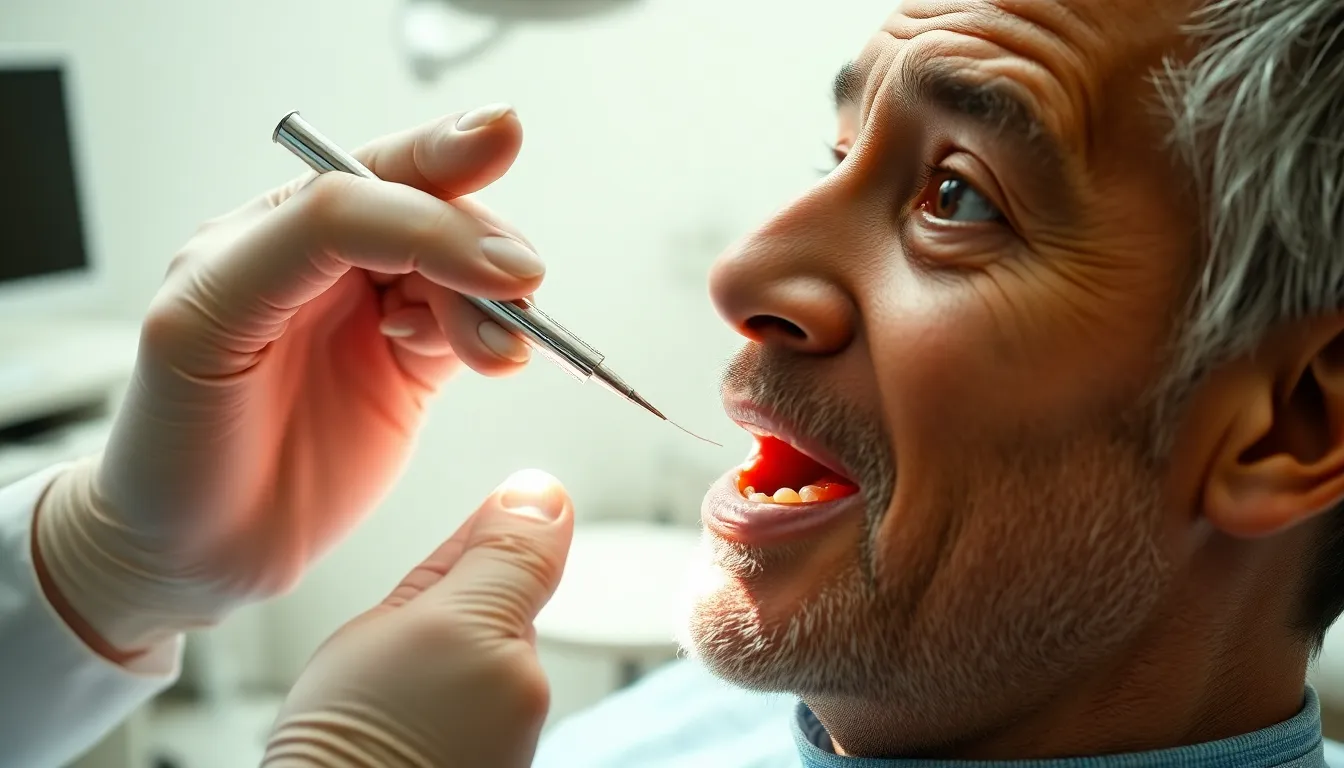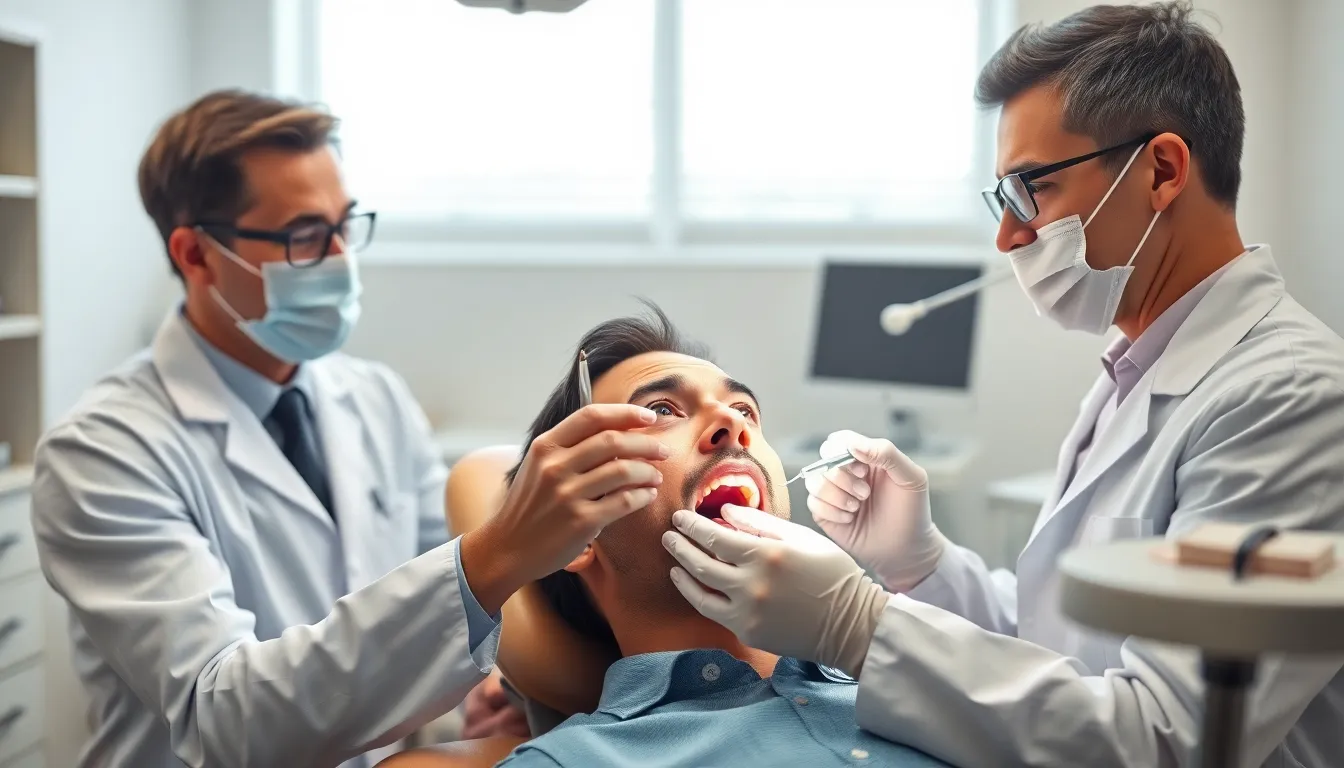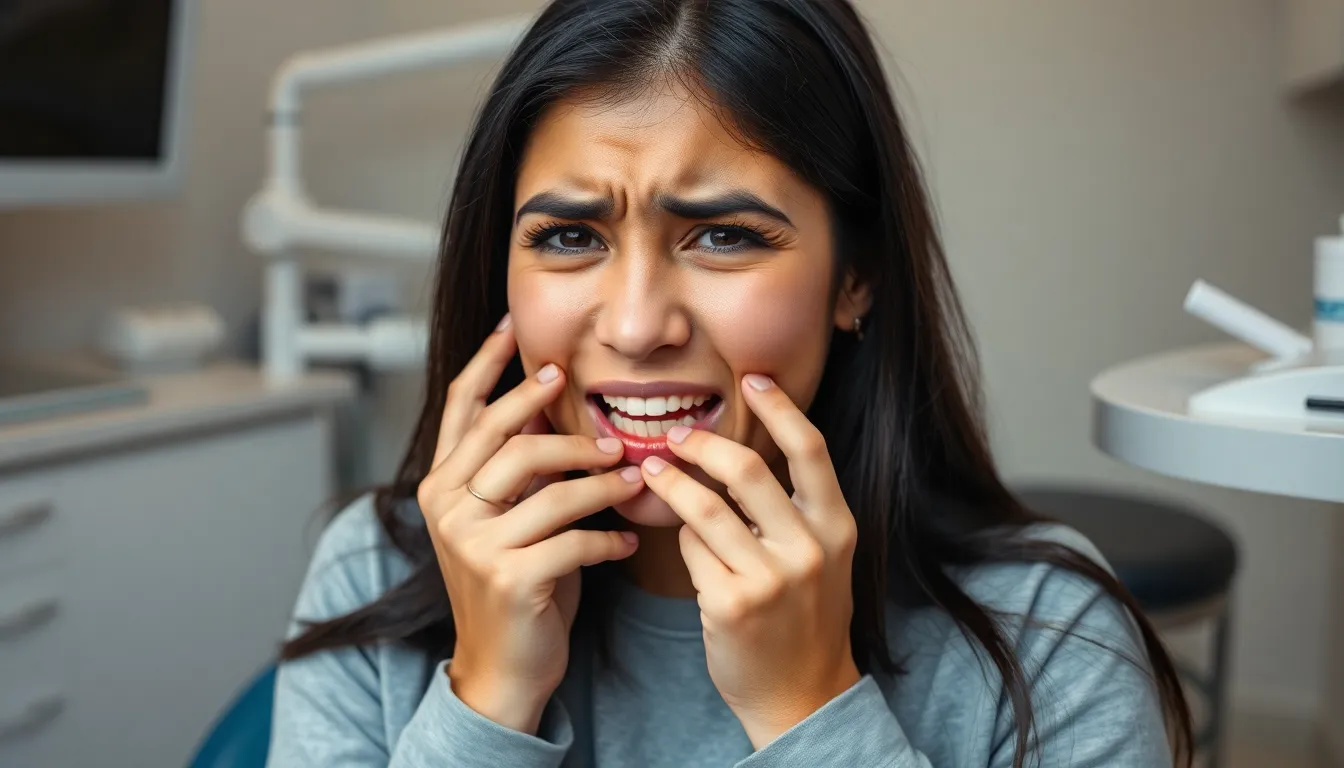Are you experiencing unbearable pain after teeth whitening? You’re not alone. This common but distressing side effect can turn your smile-improving experience into a painful ordeal.
Teeth whitening procedures, whether professional or at-home, sometimes lead to important discomfort ranging from mild sensitivity to severe pain. Understanding why this happens and how to find relief is crucial for anyone dealing with post-whitening pain. In this text, we’ll explore the causes of teeth whitening pain, when you should be concerned, and effective remedies to help you get back to enjoying your brighter smile without the agony.
Understanding Unbearable Pain After Teeth Whitening
Teeth whitening procedures can sometimes lead to uncomfortable side effects, with pain being among the most common complaints patients report. Sensitivity and discomfort after whitening treatments occur when the bleaching agents penetrate through the enamel and irritate the nerve endings in the dentin layer. Many patients experience temporary sensitivity that resolves within 24-48 hours, but for some, the pain becomes unbearable and interferes with daily activities.
Dr. Todd B. Harris notes, “In my 15 years of practice, I’ve seen many patients who were caught off guard by the intensity of post-whitening pain. One particularly memorable case involved a 34-year-old patient who couldn’t eat, drink, or speak comfortably for three days after an in-office whitening procedure. This severe reaction, while uncommon, demonstrates why understanding the potential for pain is crucial before undergoing any whitening treatment.”
Common Causes of Post-Whitening Pain
Several factors contribute to the development of pain after teeth whitening:
- Concentration of whitening agents – Higher peroxide concentrations (35-40%) used in professional treatments may cause more intense sensitivity
- Pre-existing dental conditions – Micro-cracks in enamel, receding gums, or untreated cavities create pathways for whitening agents to reach nerve endings
- Duration of treatment – Leaving whitening products on longer than recommended increases the risk of pain
- Individual sensitivity – Genetic factors can make some people naturally more susceptible to dental pain
- Dehydration of teeth – Whitening agents temporarily dehydrate teeth, making them more sensitive to temperature changes
Differentiating Normal Sensitivity from Problematic Pain
Normal sensitivity following teeth whitening feels like:
- Mild to moderate discomfort when consuming hot or cold items
- Brief, shooting sensations that quickly subside
- Generalized sensitivity that gradually improves within 24-48 hours
Pain requiring professional attention includes:
- Severe, persistent throbbing that doesn’t respond to over-the-counter pain medication
- Sharp, localized pain in exact teeth
- Discomfort lasting more than 72 hours
- Pain accompanied by swelling, fever, or unusual taste in the mouth
- Inability to eat, drink, or speak normally due to pain intensity
Risk Factors That Increase Chances of Severe Pain
Certain conditions predispose individuals to experiencing more severe pain after whitening treatments:
| Risk Factor | Impact on Pain Risk |
|---|---|
| Exposed dentin | 3x higher risk of severe sensitivity |
| Recent dental work | 2x increased chance of complications |
| History of sensitivity | 4x more likely to experience unbearable pain |
| Gum recession | 2.5x greater risk of prolonged discomfort |
| Enamel erosion | 3.5x higher likelihood of intense sensitivity |
Understanding these risk factors helps identify patients who might benefit from alternative whitening approaches or additional protective measures before treatment.
Common Causes of Severe Pain Following Whitening Treatments

Understanding what causes unbearable pain after teeth whitening helps you recognize when your symptoms require attention. Three primary factors typically contribute to severe post-whitening discomfort, each affecting different parts of your oral cavity.
Tooth Sensitivity and Nerve Irritation
Peroxide-based bleaching agents in whitening products penetrate your tooth enamel to break down stains. This penetration exposes the dentin layer underneath, which contains microscopic tubules connected directly to your tooth nerves. These exposed tubules become reactive to hot, cold, and pressure stimuli, creating sharp, shooting pain or persistent throbbing sensations. High-concentration whitening products (those exceeding 10% hydrogen peroxide) particularly increase this risk. Tiny, invisible cracks in your teeth can worsen this effect by allowing whitening chemicals to reach the nerve more directly.
Dr. Todd B. Harris notes, “I’ve seen patients who used high-concentration whitening products for longer than recommended periods experience debilitating sensitivity. One patient described it as ‘lightning bolts shooting through my teeth’ whenever they tried to drink water.”
Gum Inflammation and Chemical Burns
Your gum tissue is vulnerable to chemical irritation from whitening agents. Hydrogen peroxide can damage these delicate tissues when contact occurs for too long, resulting in redness, swelling, and burning pain. Ill-fitting whitening trays represent a common culprit, as they allow gel to seep onto your gums rather than staying on tooth surfaces. Excessive application of whitening gel similarly increases risk, with excess product frequently spreading to gum tissue.
“Chemical burns on gum tissue appear white initially, then become red and inflamed,” explains Dr. Harris. “A patient once came in with severely irritated gums after using strips that consistently overlapped her gum line. She experienced such intense burning that she couldn’t sleep for two nights.”
When whitening agents contact existing dental issues like gum recession, exposed roots, or untreated cavities, they exacerbate these conditions dramatically. The chemicals reach areas without protective enamel, directly irritating nerve endings and causing intense pain that lasts significantly longer than typical sensitivity.
How to Differentiate Between Normal Discomfort and Severe Pain

Normal discomfort after teeth whitening typically manifests as mild to moderate sensitivity that lasts for a short period—usually a few hours to two days. You’ll notice this sensitivity primarily when consuming hot, cold, or sweet foods, creating a temporary tingling or mild sharpness that doesn’t interfere with daily activities.
Severe pain presents quite differently, characterized by intense, persistent discomfort that doesn’t subside with time. Your ability to eat, drink, or speak may become compromised due to throbbing, sharp, or burning sensations lasting beyond 48 hours. This pain often localizes to exact teeth or affects areas where the gums appear red, swollen, or damaged.
Signs of Normal Whitening Sensitivity
Mild sensitivity after teeth whitening represents a common reaction experienced by many patients. Temporary discomfort occurs when drinking cold beverages or eating ice cream but quickly fades when the stimulus is removed. Temperature sensitivity usually resolves within 24-48 hours as your teeth rehydrate and remineralize. Brief, intermittent zings of sensitivity during exact activities don’t warrant concern if they diminish over time.
Dr. Todd B. Harris explains, “Most of my patients experience some degree of sensitivity after whitening treatments. I reassure them that this transient discomfort is normal and typically resolves within two days as the teeth naturally recover from the whitening process.”
Warning Signs That Require Professional Attention
Persistent, throbbing pain that doesn’t improve with over-the-counter pain relievers signals a more serious issue requiring immediate dental evaluation. Sharp, shooting pain that occurs spontaneously without any trigger indicates potential nerve irritation or damage. Visible gum burns, characterized by white or red patches, bleeding, or important swelling around treated teeth demand professional care.
Increasing sensitivity over time rather than gradual improvement suggests potential enamel erosion or pulp inflammation. Radiating pain that extends beyond the treated teeth to your jaw, ear, or head might indicate deeper inflammation requiring prompt attention.
One patient shared her experience: “After using a high-concentration whitening kit, I developed excruciating pain that kept me awake at night and persisted for five days. When I finally saw my dentist, they discovered the whitening gel had penetrated through a microscopic crack in my tooth, causing inflammation of the pulp tissue.”
When to Contact Your Dentist
Contact your dentist immediately if pain remains unbearable after 48 hours even though using desensitizing products. Swelling of the gums, face, or lymph nodes accompanied by whitening pain requires urgent professional evaluation. Fever occurring alongside dental pain after whitening suggests possible infection that needs prompt treatment.
Unusual tastes or discharge around painful teeth indicate potential infection or tissue damage requiring professional assessment. Teeth that become extremely sensitive to even room temperature air flowing over them likely need immediate dental intervention to prevent further complications.
Recognizing these distinctions helps ensure you respond appropriately to post-whitening discomfort, protecting your dental health while still achieving the bright smile you desire.
Immediate Relief Methods for Unbearable Dental Pain

Finding relief from teeth whitening pain becomes a top priority when discomfort interferes with your daily activities. The following methods can provide quick relief while your teeth recover from the whitening process.
Over-the-Counter Pain Management Options
Over-the-counter pain relievers offer effective temporary relief for post-whitening discomfort. Nonsteroidal anti-inflammatory drugs (NSAIDs) like ibuprofen reduce both pain and inflammation that commonly follow whitening treatments. Acetaminophen serves as an alternative option for those who cannot take NSAIDs. Desensitizing toothpastes containing potassium nitrate or fluoride help block nerve signals that trigger pain when brushing or eating. Fluoride gels or varnishes strengthen enamel and significantly reduce sensitivity when applied either at home or in a dental office. Rinsing your mouth thoroughly with lukewarm water immediately after experiencing discomfort removes residual bleaching agents and soothes irritated tissues.
Dr. Todd B. Harris notes, “Many patients experience immediate relief by simply avoiding foods and beverages with extreme temperatures for 48-72 hours after whitening. This simple precaution prevents additional sensitivity triggers while your teeth recover.”
Home Remedies That Actually Work
Cold compresses applied to the outside of your cheek effectively numb pain and reduce swelling in the affected area. Dairy products like milk or yogurt used as a mouth rinse neutralize acidity and provide minerals that ease sensitivity. Applying aloe vera gel directly to irritated gums soothes inflammation and promotes healing of chemically irritated tissues. Giving your teeth recovery time by temporarily stopping all whitening products allows natural remineralization to occur.
“I recently treated a patient who experienced severe sensitivity after using whitening strips,” shares Dr. Harris. “She found remarkable relief by applying a cold milk compress to her teeth for five minutes every few hours. The calcium and proteins in milk helped strengthen her enamel while the cold temperature numbed the nerve endings.”
Maintaining gentle oral hygiene with a soft-bristled toothbrush prevents further aggravation of sensitive areas while keeping your mouth clean. Salt water rinses (1/2 teaspoon of salt in 8 ounces of warm water) reduce inflammation and create an alkaline environment that counters sensitivity. Avoiding acidic foods and beverages prevents additional enamel erosion during the recovery period. Using a straw when drinking cold or acidic beverages minimizes contact with sensitive teeth surfaces.
If your pain persists beyond 48 hours or worsens even though these remedies, contact your dentist immediately to rule out complications like pulpitis or chemical burns that require professional intervention.
When to Seek Emergency Dental Care

Emergency dental attention becomes necessary when pain after teeth whitening crosses from normal sensitivity into potentially serious complications. Your body gives clear signals when professional intervention is required, and recognizing these warning signs prevents further damage to your dental health.
Contact your dentist immediately if you experience persistent sensitivity lasting beyond 48 hours even though using home remedies. This extended duration often indicates deeper issues that require professional evaluation.
Intolerable or severe pain that disrupts eating, speaking, or sleeping demands urgent attention. Dr. Todd B. Harris notes, “Several patients have delayed seeking care thinking extreme pain would resolve naturally, only to discover underlying conditions exacerbated by the whitening process.”
Seek emergency care if you notice visible signs of tissue damage such as severe gum redness, swelling, or unusual changes in tooth color. These symptoms may indicate chemical burns from improper application of whitening agents or potential infection.
Gum burns or ulcerations that don’t improve within 24 hours require prompt professional treatment. Jane, a recent patient at our practice, ignored what she thought was minor gum irritation after at-home whitening, which developed into a painful chemical burn requiring specialized treatment.
Fever, swelling around the jaw, or unusual tastes in your mouth accompanying tooth pain are red flags for infection. These symptoms might suggest that whitening agents have penetrated through microscopic cracks or untreated cavities, creating serious complications.
Throbbing pain that worsens rather than improves over time indicates possible pulp inflammation (pulpitis), a condition that can develop when whitening chemicals reach the inner pulp through compromised enamel or exposed dentin.
Prevention Strategies for Future Whitening Treatments

Preventing unbearable pain after teeth whitening starts with consulting a dental professional before attempting any whitening procedure. Your dentist can evaluate your oral health to identify any untreated cavities, microscopic cracks, or gum issues that might increase sensitivity. Professional guidance ensures you’re using whitening products with appropriate peroxide concentrations customized to your individual sensitivity level.
“Many patients come to me after experiencing important pain from over-the-counter whitening products,” explains Dr. Todd B. Harris. “A thorough examination before whitening can reveal potential risk factors and allow us to customize treatments accordingly, dramatically reducing the likelihood of post-procedure discomfort.”
Proper application techniques significantly reduce the risk of pain and irritation. Follow product instructions carefully to avoid gel contact with your gums. Custom-fitted trays provide better control over gel placement than generic options, preventing the spread of whitening agents to sensitive tissues.
Limiting whitening frequency gives your enamel time to recover between treatments. Overuse of whitening products can erode enamel, exposing sensitive dentin and leading to sharp, persistent pain. Creating a reasonable whitening schedule with adequate breaks protects your dental health while still achieving desired results.
Gum protection during treatment serves as a critical preventive measure. Dental professionals use protective barriers such as gum guards or specialized gels to shield soft tissues from irritation. The absence of proper protection allows peroxide to contact gums, resulting in redness, swelling, burning sensations, and important pain.
Proactive sensitivity management involves using desensitizing toothpaste for several weeks before whitening treatments. Avoiding hot, cold, or acidic foods and beverages before and after sessions reduces trigger points for discomfort. This preparation strengthens your teeth’s resistance to sensitivity triggers during the whitening process.
Maintaining excellent oral hygiene creates a foundation for comfortable whitening experiences. Healthy gums and teeth prove less susceptible to irritation and sensitivity post-whitening. Regular brushing, flossing, and professional cleanings remove plaque buildup that can intensify whitening agent effects on vulnerable areas.
Long-Term Solutions for Whitening-Sensitive Teeth
Teeth whitening sensitivity doesn’t have to be a permanent problem. Desensitizing products containing potassium nitrate or fluoride strengthen your enamel and reduce nerve sensitivity, creating a protective barrier against future discomfort. Professional supervision ensures correct application techniques and appropriate gum protection during whitening treatments, minimizing the risk of severe pain.
“Many of my patients who’ve experienced sensitivity benefit from spacing out their whitening sessions,” notes Dr. Todd B. Harris. “This allows the enamel to recover naturally and prevents the chronic sensitivity that often results from too-frequent treatments.”
Limiting whitening frequency gives your teeth time to remineralize between sessions. Milder whitening agents with lower peroxide concentrations offer a gentler alternative for those with naturally sensitive teeth, reducing the likelihood of nerve irritation while still providing noticeable results.
Addressing underlying dental issues before whitening is crucial for long-term comfort. Cavities, cracks, or gum problems provide pathways for whitening agents to reach the nerve, causing intense pain that can be avoided with proper dental care. Remineralization treatments help repair enamel damage caused by whitening procedures, strengthening your teeth against future sensitivity.
One patient, Sarah, shared her experience: “After experiencing unbearable pain from an at-home whitening kit, I consulted my dentist who recommended a specialized remineralizing gel. Using it for two weeks before trying a professional whitening treatment made all the difference—I got the bright smile I wanted without the excruciating sensitivity.”
Non-peroxide whitening alternatives offer another solution for chronically sensitive teeth. These gentler formulations, while typically requiring more applications for comparable results, provide a comfortable whitening experience for those who’ve struggled with traditional methods.
Conclusion
Teeth whitening pain doesn’t have to derail your journey to a brighter smile. By understanding what’s normal and what requires attention you can navigate this common side effect confidently. Remember that mild sensitivity typically resolves within 48 hours while persistent or severe pain warrants professional care.
Armed with effective relief strategies and preventive measures you’re now equipped to make informed decisions about your dental care. Whether it’s using desensitizing products before treatment scheduling proper intervals between sessions or consulting with your dentist beforehand these approaches can significantly reduce discomfort.
Your dental health shouldn’t be compromised in pursuit of whiter teeth. With the right precautions and prompt attention to warning signs you can achieve that dazzling smile without enduring unbearable pain.
Frequently Asked Questions
Why do my teeth hurt after whitening?
Teeth hurt after whitening because bleaching agents penetrate the enamel and can irritate nerve endings in the dentin layer. This sensitivity varies from mild discomfort to severe pain. Most cases resolve within 24-48 hours, but factors like whitening agent concentration, pre-existing dental conditions, treatment duration, and individual sensitivity can influence the intensity and duration of pain.
How long does teeth whitening sensitivity last?
Normal teeth whitening sensitivity typically lasts 24-48 hours. During this time, you may experience mild to moderate discomfort, particularly when consuming hot, cold, or sweet foods and beverages. If sensitivity persists beyond 48 hours or worsens over time, it’s recommended to contact your dentist as this could indicate a more serious issue.
What’s the difference between normal sensitivity and severe pain after whitening?
Normal sensitivity feels like mild to moderate discomfort triggered by temperature changes or sweet foods and resolves within 48 hours. Severe pain is intense, persistent, may occur without triggers, interferes with daily activities, and lasts beyond 48 hours. Severe pain might also include throbbing sensations, visible gum burns, or increasing sensitivity over time.
How can I get immediate relief from teeth whitening pain?
For immediate relief, take over-the-counter pain relievers like ibuprofen, use desensitizing toothpaste, apply cold compresses, rinse with milk or saltwater, and practice gentle oral hygiene. Avoid extremely hot, cold, or acidic foods and beverages. Give your teeth recovery time by temporarily discontinuing whitening treatments until the sensitivity subsides.
When should I seek emergency dental care after whitening?
Seek emergency dental care if pain persists beyond 48 hours despite home remedies, disrupts daily activities, or is accompanied by severe gum redness/swelling. Other warning signs include fever, swelling around the jaw, unusual tastes in the mouth (potential infection), or worsening throbbing pain (possible pulp inflammation). Don’t ignore these symptoms as they may indicate serious complications.
Can I prevent pain from future teeth whitening treatments?
Yes, consult with a dental professional before whitening to identify risk factors and receive customized treatment recommendations. Use proper application techniques, limit whitening frequency, and ensure gum protection during treatment. Practice proactive sensitivity management by using desensitizing toothpaste before and after treatments, and maintain excellent oral hygiene to create a foundation for comfortable whitening experiences.
Are there alternatives for people with sensitive teeth who want whiter teeth?
Yes, there are several alternatives for sensitive teeth. Consider non-peroxide whitening products specifically designed for sensitive teeth, desensitizing products containing potassium nitrate or fluoride, and remineralizing gels. Space out whitening sessions to allow enamel recovery. Address underlying dental issues before whitening, and discuss professional options like lower-concentration treatments with your dentist.
Can pre-existing dental conditions make whitening pain worse?
Absolutely. Pre-existing conditions like exposed dentin, recent dental work, history of sensitivity, gum recession, and enamel erosion significantly increase the risk of severe pain after whitening. These conditions can allow whitening agents to penetrate deeper into the tooth structure or come into contact with more sensitive areas, resulting in intensified discomfort during and after treatment.







